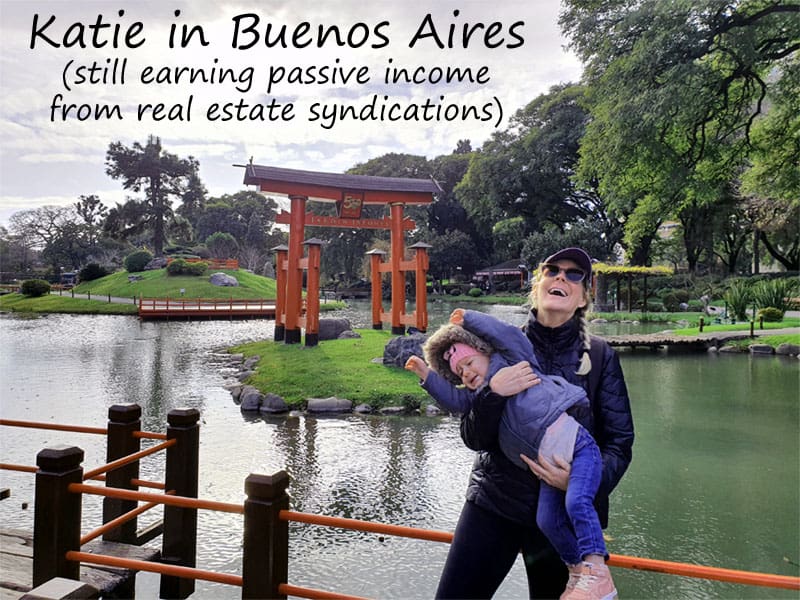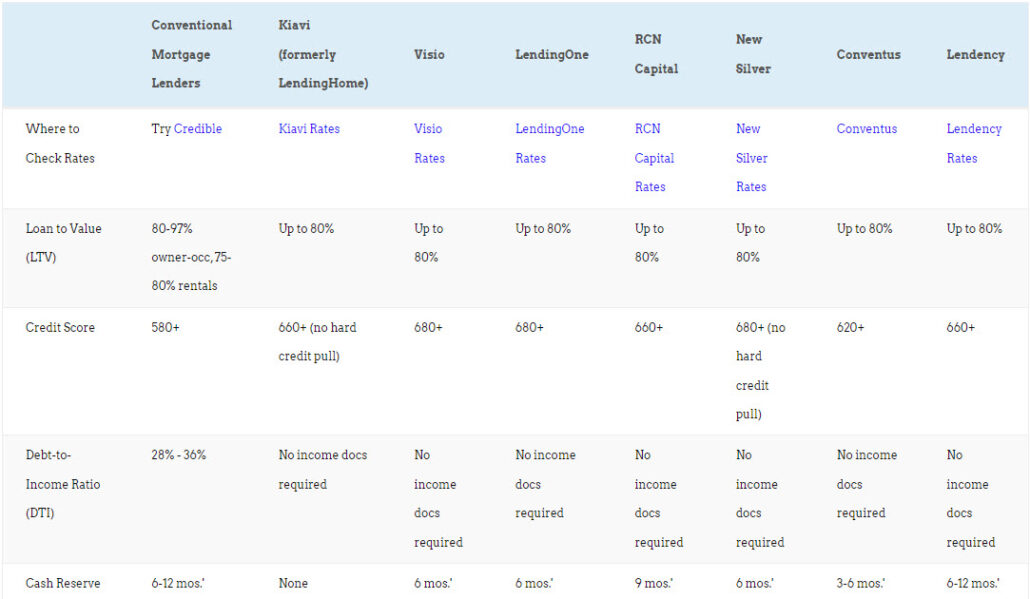
Chocolate or caramel? Rock or hip hop? Passive or active investing in real estate?
Some investors love buying rental properties directly and owning them in their entirety. Others prefer buying fractional ownership in real estate, through group real estate syndications.
We can’t tell you which one is “better” because both come with pros and cons. But we can break down those upsides and downsides for you, so you can decide whether passive versus active investing is better for you.
Pros & Cons of All Real Estate Investments
Before we compare active versus passive real estate investing, you should understand the advantages — and drawbacks — that most real estate investments share.
Real estate investments typically offer strong cash flow, long-term appreciation, and a fantastic hedge against inflation. In fact, one study across 16 countries over 145 years found that real estate generated better returns than stocks, bonds, or any other type of investment.
It also provides outstanding tax advantages, including property depreciation and dozens of real estate tax deductions. Plus, you have several options to defer or avoid capital gains tax on real estate.
For all those upsides, real estate investing has some cons as well. To begin with, it’s notoriously illiquid: it’s time-consuming and expensive both to buy and to sell. Compare that to stock investing, where you can click a button to buy or sell instantly, for free. That makes real estate an inherently long-term investment.
Real estate also costs a lot of money, which means you need plenty of benjamins to invest. Not everyone has tens of thousands of dollars snoozing in a savings account. While there are ways to invest $1,000 in real estate (or less), those options mark the exception, not the rule.
Finally, there’s a tradeoff between control and convenience in real estate investing. This lies at the heart of what we’ll explore today: how to decide whether to be a hands-on investor or a passive investor who just writes a check and calls it a day.
Active vs. Passive Investing: Pros of Rental Properties
Buying rental properties directly comes with plenty of perks. Consider the following upsides as you decide how you want to invest in real estate.
Control
When you buy properties by yourself, you’re in the driver’s seat.
You decide exactly what property you want to buy and for how much. You decide whether to renovate it, and if so, the quality (and expense) of those property upgrades.
Once the property is ready for a renter, you can screen the rental applications yourself or hire a property manager. You draft and sign the lease agreement, oversee rent collection, renew or non-renew lease agreements, and raise rents as you see fit.
Or perhaps you’d rather operate the property as a short-term vacation rental? That’s fine, too.
It’s your show; you make all investment decisions.
Choice of Exit Strategies
The hold time and exit strategy are entirely up to you as well. Do you want to refinance it following the BRRRR strategy, and potentially earn infinite returns? You may be able to pull your initial investment back out of the property, leaving you with no money tied up in it. Then, you simply hold it indefinitely, earning cash flow and letting the property appreciate even as your tenants pay down your rental property mortgage.
In fact, you could let the renters pay off the mortgage entirely, only to take out another mortgage to cash out the property without having to sell it. You also avoid paying capital gains taxes that way, even as you pull out your equity.
And, of course, you can sell the property whenever you like.
Easier Control Over 1031 Exchanges
Speaking of exit strategies, ambitious investors often like to 1031 exchange their rental properties when they sell, trading up to a larger property that generates more cash flow. That defers their capital gains tax on the sold property.
As an active investor, you control the timing of both the sale of the existing property and the purchase of the new one. While not “easy” per se, you still control both transactions. You can even pull off maneuvers such as reverse 1031 exchanges to make the timing fit your needs.
While it’s possible to use a 1031 exchange for real estate syndications, it’s harder. In most cases, you have to find a deal specifically designed for a 1031 exchange — and there just aren’t that many of those out there.
Losses Offset (Some) Active Income
Nearly all of the tax advantages of rental properties and real estate syndications are identical. But there’s one exception.
To explain it, you should first understand that as a general rule, losses on passive investments (such as stocks and real estate syndications) can only offset passive income and gains on your tax return. For example, if you show a $5,000 loss on a real estate syndication, it can only offset other passive income streams, such as other real estate income or dividends from stocks. You can’t use it to offset your salary or other active income.
Active landlords get an exception, however: they can offset up to $25,000 in active income each year with rental property losses. So if you show a $5,000 loss on a rental property, you can knock $5,000 off your W2 taxable income.
Disadvantages of Investment Properties
That greater control is all well and good, but it comes at a cost. Several, in fact.
High Cost to Buy
Individual properties are expensive, and when you buy them by yourself, you shoulder that cost alone.
Sure, you can borrow a rental property mortgage. But you’ll almost certainly put down 20–40% of the purchase price, which still typically means tens of thousands of dollars.
And that says nothing of closing costs and cash reserves. You’ll need both available for closing on the property, adding many more thousands to your bottom line.
Labor to Find Deals
A fellow real estate investor once told me “There’s no ‘deal tree’ where you walk up and pluck off deals any time you like. You have to go out and find them.”
Sure, you can go on the MLS or an investment property platform like Roofstock to browse available properties. But you won’t find outstanding deals — by definition you’ll pay market value on these properties available on the open market.
Alternatively, you can network with real estate wholesalers such as Norada or Asset Column. You’ll find better deals than on MLS, in many cases. But don’t expect earth-shattering returns.
If you want the best deals, you have to go out and create them yourself. You could find these off-market deals by driving for dollars, or through finding pre-foreclosures, or other distressed sellers.
And it all takes work on your part. Often, you have to reach out to a hundred sellers in order to close on one property. Think direct mail campaigns, phone calls with sellers, contract negotiations, touring properties, and vetting deals in general. Which says nothing of the work to line up financing.
It’s a lot.
Repair Headaches
Finding a good deal often involves buying a fixer-upper and renovating it to force equity. Read: more work. You have to negotiate with contractors, oversee their work, and send them back in to fix the things they didn’t do right the first time around. You have to pull permits from your local housing authority, hassle with inspectors, and redo more work. All while potentially juggling a draw schedule with your lender, and coordinating with their inspector to get reimbursed for work in phases as you go along. Oh, and you get the privilege of paying the investment property mortgage by yourself until renovations are complete, you secure a use and occupancy permit, and advertise and rent the property.Property Management Headaches
Laypeople love to hate landlords. They have no idea how much of a pain in the rear it is to manage rental properties. There’s plenty of work in filling vacancies, of course. That includes advertising units, showing them to prospective tenants, collecting rental applications, screening renters, signing lease agreements, doing pre-move-in inspections, and collecting security deposits and putting them in the legally-mandated account type. But even after you sign a rental agreement, you have to actually collect the rent, and not every tenant likes to pay it. Some renters require a slew of phone calls, texts, and emails before they bother paying the rent — if they pay it at all. Some only pay the rent if you force them to pay it by filing for eviction. Which is a process in itself, from rent court hearings to scheduling a date with the sheriff’s office and more. I’ve had evictions take 11 months before, all while the renter lived for free and I covered all the expenses. You can hire a property manager, of course. But then you need to manage the manager, checking their work on screening tenants, making sure they’re actually inspecting the property twice a year, and double checking their invoices for hidden fees. It’s not for the faint of heart.Accounting Costs
When you own a rental property directly, it’s up to you to track all the income and expenses. From the basics like property taxes and insurance to every minor repair or maintenance cost to tracking your mileage, you have plenty of bookkeeping to do. Then, come tax season, you get to fill out additional tax schedules such as Schedule E tax statements. Get it wrong, and the IRS comes a-knocking, audit in hand. Again, you can pay an accountant extra to take on these additional headaches for you. But it’ll cost you. Pro Tip: Our landlord software helps you automate everything from expense tracking to Schedule E tax forms. Give it a whirl.High Cost to Sell
It cost you a ton of money to buy the property — and it’ll cost you many thousands more to sell it. From paying a real estate agent to paying transfer taxes, and recordation fees to settlement attorney fees, prepare to pay. Oh, and remember how I said you can sell whenever you want? That’s sort of true, but you need to actually find a buyer. That can take months, especially if you want full market value for your investment property. Which, of course, you do.Passive vs. Active Investing: Real Estate Syndications
The average investor is far less familiar with real estate syndications than rental properties. So, how do they compare with buying a rental property by yourself as an active investor?Completely Passive Investments
These group real estate investments let you buy into large commercial properties such as apartment complexes, self-storage facilities, mobile home parks, retail properties, or industrial properties as a silent investor. In passive real estate investing, you write a check and effectively become a fractional owner. As such, you’re entitled to your share of the cash flow and profits upon the sale of the property. You don’t have to go out and try to find bargains on properties yourself. No direct mail campaigns, no driving for dollars, no knocking on doors. Nor do you have to arrange financing, or oversee renovations, or wrangle contractors and tenants and property managers. Instead, it’s as passive as investing in stocks or bonds or REITs. After buying in, you just sit back and enjoy the distributions and returns.Easy to Review Deals
To evaluate a potential property investment, active investors typically walk through the property themselves and conduct several inspections. You then have to do a complete market analysis on both property values and market rents for comparable properties. If you’re wise, you also run the cash flow analysis through a rental income calculator. (I wasn’t wise when I first started investing in rental properties — and it cost me dearly.) With real estate syndications, you can review the deal in its entirety from the comfort of your couch. The sponsor (syndicator) has already done the market analysis, calculated the property’s cash flow, and forecast expenses and returns. You should review them, of course, to make sure you feel they’re conservative enough, but you don’t have to do it yourself. With an hour’s analysis, you can typically make an informed decision about whether to invest. It takes a lot more than an hour’s work to do due diligence on a rental property.Simple Accounting
Passive investors in a real estate syndication, known as limited partners or LPs, don’t have to do any of the accounting work. They don’t have to track income or expenses, track their mileage, or fill out page after page of tax forms. Instead, they just get a K1 form from the sponsor each year. They add that bottom-line number to the appropriate line on their tax return. The end.Accelerated Depreciation
When real estate syndicators buy a property, they almost always perform a cost segregation study. It reclassifies as much of the property as possible under different tax categories, with shorter depreciation periods. The upside? You can write off more money for depreciation in the first few years of property ownership. That in turn means that you often show a loss on your tax return, even as you collected real cash flow from the syndication. For example, you might have collected $3,000 in distributions, but showed a $10,000 loss on your tax return. While it’s possible to conduct a cost segregation study on a single-family rental property, it’s expensive (usually $4,000–$5,000), so most investors don’t do it. That said, startup Rental Property Refund offers a service for around $1,500, specifically designed for single-family rentals. (Relatively) Stable Cash Flow
(Relatively) Stable Cash Flow
When your tenant moves out from a single-family rental property, you lose 100% of your income. But you still need to make the mortgage payment, pay property taxes and insurance, repair and maintain the property.
Apartment buildings with 200 units are another matter entirely. At any given time, there are a handful of vacant units turning over. Likewise, the building requires ongoing maintenance along with regularly scheduled repairs and upgrades.
In other words, these expenses just run in the background at a constant low hum. Instead of choppy fits and starts, you get relatively smooth, predictable cash flow.
Options to Invest Smaller Amounts
When you buy an investment property by yourself, you have to come up with the down payment, closing costs, and cash reserves by yourself. That typically means tens, if not hundreds, of thousands of dollars. While real estate syndications generally require a high minimum investment as well, you do have a few options to invest less. First, you can join a real estate investing club like ours, where members pool funds to meet the high minimum investment. In our club, for example, the minimum investment for individual investors is $5,000. We vet a new passive investment deal every month, and all deals are optional. Some real estate crowdfunding platforms also make real estate syndications relatively easy and cheap to invest in. Think $10,000–$25,000 instead of $50,000–$100,000. Though they don’t offer multifamily syndications, you can similarly buy fractional ownership in properties through platforms like Ark7 and Arrived for under $100. Ark7 even offers a secondary marketplace where you can sell shares at your leisure. You do have some other alternative passive strategies for real estate investing. From real estate investment trusts (REITs) to diversified real estate funds like Fundrise to secured property loans like Groundfloor, you could invest as little as $10 in many of these platforms.Options to Invest for Infinite Returns
Love the BRRRR strategy, and think it’s the only option to earn infinite returns on real estate? Many real estate syndicators follow the exact same strategy, just on a larger scale. They buy a fixer-upper apartment complex, renovate each unit over the course of a year or two, then refinance it and return investors’ capital to them. You get your money back, but you keep your ownership interest in the property. You keep collecting cash flow, and eventually when the sponsor sells the property, you get your cut of the profits. And in the meantime, you can keep recycling the same investment money over and over again, in deal after deal.Downsides of Passive Group Investments
As much as I love syndications, they come with their fair share of drawbacks. Beware of the following, before you start plowing your money into property syndications.
Few Syndicators Allow Non-Accredited Investors
Uncle Sam, in his infinite paternalism, doesn’t think lower- and middle-income Americans are responsible enough with their money to invest in real estate syndications.
So, the SEC regulates real estate syndications to make it hard for sponsors to accept non-accredited investors. As a result, most syndications are only available to wealthy, accredited investors.
Some sponsors go out of their way to allow non-accredited investors under regulation 506(b). But they aren’t allowed to advertise publicly, making it harder for them to raise capital and harder for you as an investor to find them. You have to establish an existing relationship with them before they can accept your money.
Which is precisely what Deni and I have done with our Co-Investing Club. We’ve established relationships with sponsors so that we can connect you with them.
High Minimum Investment (If You Invest Solo)
As mentioned above, the typical real estate syndication requires a minimum investment of $50–100K. Woof.
Most of us don’t have that just lying around. And even if you do, it’s a lot of money to commit to a single asset.
Fortunately, you can pool money with other investors to reach that minimum. Which is exactly what we do in our Co-Investing Club.
Lack of Control & Liquidity
With a rental property, you decide how to renovate it and when. You decide how aggressively you’ll screen tenants, which tenants to accept, and how much rent to charge.
With a passive real estate investment, someone else does all of that for you. It saves you time, but it also takes you out of the driver’s seat.
Most important of all, you don’t get any say on when to sell the property. Or, for that matter, whether you’d rather refinance it than sell (or vice versa). You don’t have any control over liquidity — you get your money back when the sponsor refinances or sells, and not a moment before.
Few Deals Designed for 1031 Exchanges
Some sponsors design deals specifically for 1031 exchanges, and they tell you up front that they plan to roll the proceeds from one deal to another upon the sale.
But don’t expect to find many of these deals. In most cases, sponsors just pay out investors when the property sells and be done with it.
Granted, you can negotiate with sponsors to let you invest just your portion as a 1031 exchange. But it requires more complexity for the sponsor in structuring the deal, which means they only do it for investors looking to invest huge sums of money. Think a minimum of $500,000, sometimes $1 million.
That’s not practical for most of us, and even if it is, it sinks an enormous amount into a single investment.
Final Thoughts on Passive vs. Active Investments
I’ve invested in both real estate syndications and rental properties. I’ve experienced their ups and downs firsthand.
Today, I no longer invest actively in rental properties. It just takes too much work to do it right.
I now invest in passive real estate syndications, every single month. I invest $5,000 per syndication deal alongside the other members of our real estate investment club.
That doesn’t necessarily mean you should do the same. If you value control over time and effort or if you’re looking for a real estate side hustle rather than a completely passive investment, consider rental investing.
Personally, I just want a diverse real estate portfolio; I want the results. I don’t need to control active management or manage day-to-day operations anymore. I invest in the stock market the same way: passive funds such as exchange-traded funds (ETFs) and mutual funds. I don’t pick individual stocks anymore, trying to prove how clever I am. My risk tolerance is lower, and so is my tolerance for active investment strategies.
The eager beavers out there can have fun renovating properties, and they don’t have to worry about competition from me. I’d rather have more time to spend with my wife and daughter, more time traveling the world, more time hiking or hanging out with friends.♦
Do you lean toward passive or active strategies for investing? Would you prefer to be an active manager or passive manager of your real estate investments? Why?
More Real Estate Investing Reads:
About the Author

G. Brian Davis is a real estate investor and cofounder of SparkRental who spends 10 months of the year in South America. His mission: to help 5,000 people reach financial independence with passive income from real estate. If you want to be one of them, join Brian and Deni for a free class on How to Earn 15-30% on Fractional Real Estate Investments.



























I got sick of being a landlord after having one too many problems at my rental properties. I realized I’d rather let experts handle those decisions, so I can concentrate on what matters most to me.
I’m with you Jerry!
Considering my doubts about the timeframe required for passive income to become substantial in real estate investing, can you provide some specific examples of successful passive real estate investments that have generated significant income within a 5 to 10-year period? It would greatly assist me to see real-life instances that showcase the potential for substantial passive income within this timeframe.
It depends on the investment. Some real estate investments generate strong cash flow from Day 1. Others take some time, especially if they require upfront renovations. But over the course of 5-10 years, you can earn enormous yields on your initial investment.
The most effective approach involves identifying a high-earning active investment and seamlessly integrating it with a variety of passive investments. Among these, syndications stand out for passive investment.
Thanks for your thoughts Wilma!
I may not be into active investing, but I’ve got a good job that could help me support my future passive investments. By the way, I heard about your co-investing club, and it sounds pretty intriguing.
Glad to hear it Hilary!
Syndications rock! 🌟 I love the passive approach, stable cash flow, and pro management. Real estate investing made easy.
Amen Sofia!